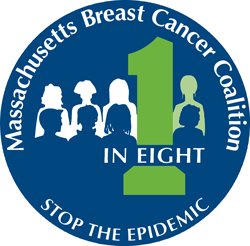National Statistics
General Statistics
- There will be an estimated 310,720 new cases of breast cancer in women in 2024. [1]
- In 2021, there were an estimated 3,972,256 women living with female breast cancer in the United States. [1]
Incidence Rates
- Approximately 13.0 percent of women will be diagnosed with female breast cancer at some point during their lifetime, based on 2017–2019 data. [1] This can also be expressed as 1 in 8 women.
- Breast cancer occurs in men as well, accounting for less than 1% of breast cancer cases in the US. Male breast cancer incidence was 1.2 cases per 100,000 men during 2015-2019, a rate that has held steady over the past 3 decades. [2]
- Breast cancer incidence rates are highest among non-Hispanic White women, next highest for non-Hispanic Black women, followed by American Indian and Alaska Native women, then Asian/Pacific Islander, and Hispanic. [2]
Mortality Rates
- Breast cancer is the second leading cause of cancer death in women, exceeded only by lung cancer. The chance that a woman will die from breast cancer is about 1 in 39 (about 2.6%) [3]
- About 42,250 women will die from breast cancer in 2024 [3]
- Non-Hispanic Black women have the lowest cancer survival rate, despite having a lower incidence rate compared to non-Hispanic White women. This disparity may be due to a combination of factors including more aggressive tumor biology, later stage at diagnosis, higher prevalence of obesity and other health conditions, as well as the lack of access to optimal care and optimal treatment. [2]
Massachusetts Statistics
MA Incidence Rates
- From 2015-2019, breast cancer was the most common type of cancer diagnosed among Massachusetts females, accounting for 30.2% of these women. [4]
- In Massachusetts, from 2015 through 2019, there were 197,985 newly diagnosed cases of cancer, an average of 39,597 cases per year. [4]
- In 2021, the incidence rate for female breast cancer in Massachusetts was 140.3 (per 100,000) and the national average was 134 (per 100,000). Massachusetts has the 13th highest rate of new breast cancer incidence by state in the United States. [5]
Causes & Risk Factors
- Ionizing radiation—including exposure from x-rays and CAT scans—is an established environmental risk factor for breast cancer. Many risk factors for breast cancer are related to exposure to estrogen and other hormones that play a role in a woman’s menstrual cycle. These risk factors include early menarche, late menopause, having children late in life, never having children, and never breastfeeding. Pharmaceutical hormones, such as HRT and DES, and behaviors that affect hormone levels—such as alcohol use and exercise—also affect risk. Women are at much higher risk than men, and the risk increases with age. Inherited genes, family history, and socioeconomic status are all associated with breast cancer risk. [6, 10]
- About 85% of breast cancers occur in women who have no family history of the disease. [7]
- High-risk mutations in the breast cancer genes (BRCA1 and BRCA2) inherited from one’s mother or father only account for about 5-10% of breast cancers. [6]
- In May 2024, the U.S Environmental Protection Agency (EPA) released an update of the Toxic Substances Control Act (TSCA) Inventory which found there are 86,770 chemicals currently registered, of which 42,377 are active for commercial use in the United States. [8]
Breast Cancer Funding & Financial Burden
- The estimated national costs of care for female breast cancer in 2020 was estimated at $29.8 billion [9]. However, the national cancer-attributable costs in the United States are projected to increase by over 30 percent from 2015 to 2030, corresponding to a total cost of over $245 billion. [11]
- In 2020, the average breast cancer-attributable costs per patient for medical services related to cancer care by cancer site and phase of care are $34,979.50 for initial care, $3,539.60 for continuing care, and $76,101.20 in the last year of life. These numbers do not include prescription drugs costs. [9]
- In 2019, a study estimated that premature deaths from breast cancer in women resulted in $6.2 billion in lost earnings. [12]
- Breast cancer research is a multi-billion-dollar industry. It makes up one of the largest research areas for federal funding — nearly $515 million was budgeted for the National Cancer Institute’s 2020 fiscal year and another $150 million comes from the Department of Defense’s Breast Cancer Research Program annually. [13] NBCC’S advocacy has also resulted in more than $4 billion federal dollars for breast cancer research. [14]
References
[1] NIH National Cancer Institute’s (NCI) Surveillance, Epidemiology, and End Results (SEER) Program
[2] Breast Cancer Facts & Figures 2022-2024, The American Cancer Society
[3] American Cancer Society – How Common is Breast Cancer? (ACS)
[4] Massachusetts Government- 2015-2019 Massachusetts Cancer Statistics
[5] Centers of Disease Control & Prevention- US Cancer Statistics
[8] United States Environmental Protection Agency
[9] Financial Burden of Cancer Care
[10] Breast Cancer Prevention Partner- Ionizing Radiation
[11] American Association for Cancer Research
[12] National and State Estimates of Lost Earning from Cancer Deaths in the US
[13] 2022 Breast Cancer Donation Guide
[14] National Breast Cancer Coalition
Updated August 2024
